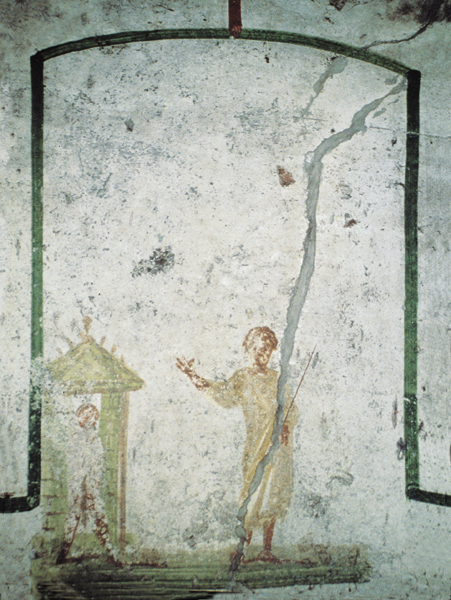
An intriguing image frequently appears on the walls of ancient Christian catacombs and on carved reliefs of early Christian tombs—a mummy-like creature emerging from a small booth. Nearby, a man holding a wand taps or points at the mummy. The scene is stunning, even slightly horrifying. The door of the tomb is open. The mummy walks. The magician’s wand points.
Viewers familiar with the Gospel of John immediately recognize this as the moment when Jesus commands the dead man to rise and exit his tomb, crying, “Lazarus, come out!” Yet in many ways—the booth, the mummy wrappings, the magician’s wand—it differs from the account in the Gospel of John (11:1–45), incidentally the only canonical gospel in which the raising of Lazarus is recounted.
Illustrations provide one way among many that the story of Lazarus can be understood. Some art reflects the gospel account itself; other art deals with issues that developed in the early Church and reveals how Christians thought about Jesus’ magical powers, about his resurrection and about whether flesh as well as spirit could be restored to life.
Already a library member? Log in here.
Institution user? Log in with your IP address.

